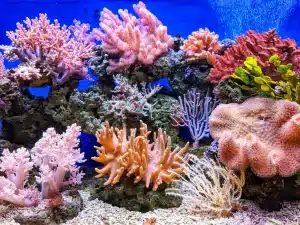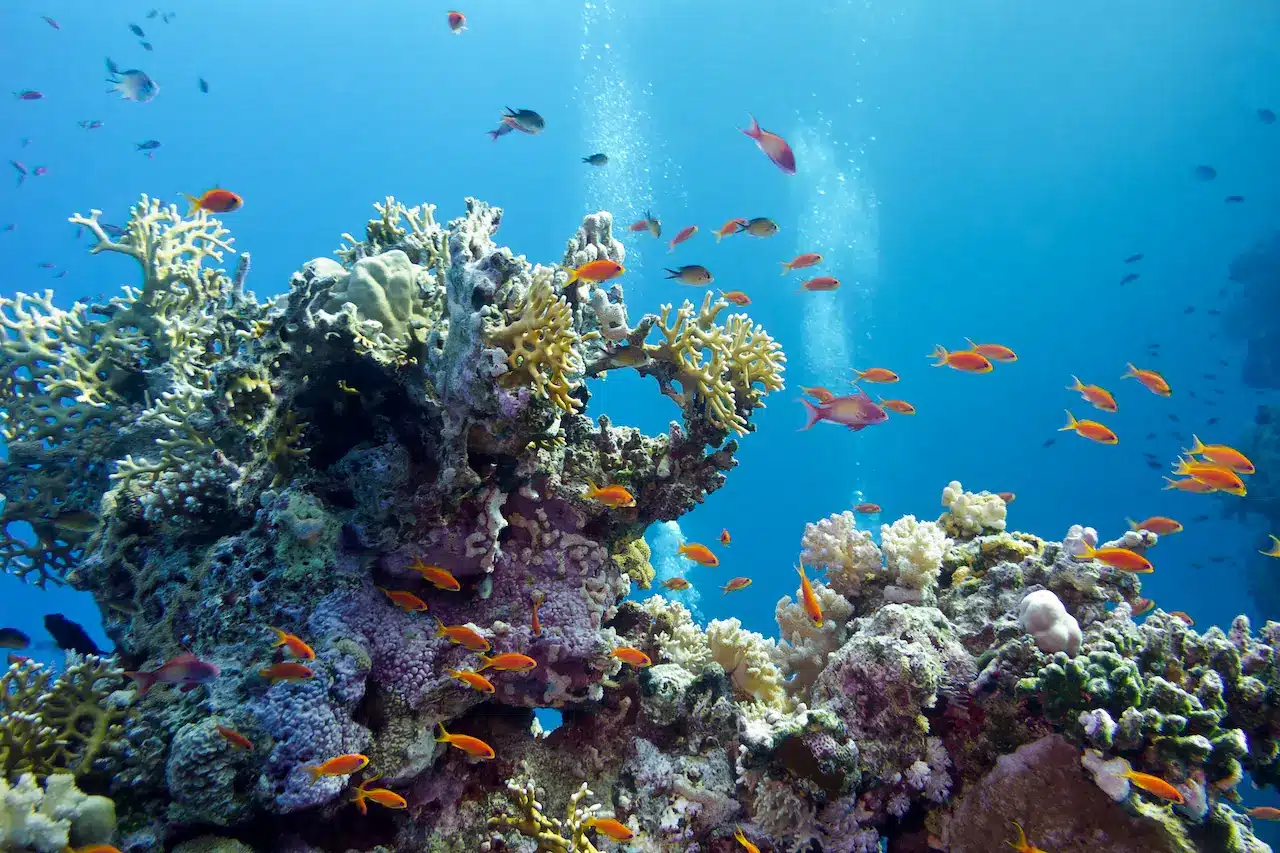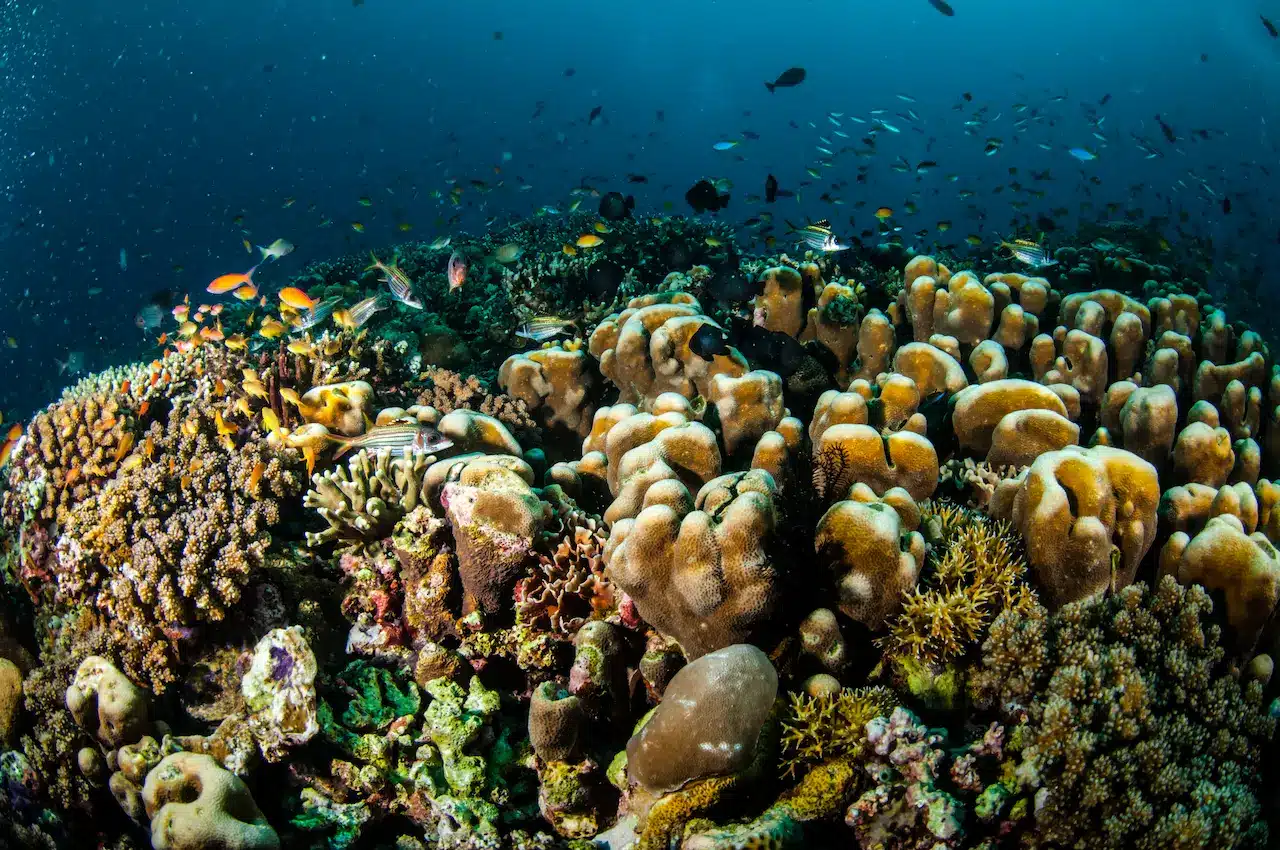Reef Realms: Building and Maintaining the Ideal Aquarium for Corals and Fish
Are you venturing into the coral reef aquariums? It’s the combination of scientific objectivity and artistic charm with an added brush of magic. Imagine a captivating mini ocean in your home, where bright corals and graceful fish live together in a carefully balanced mini-ecosystem. The trick to making it work? It’s all about perfectly copying the natural homes of these amazing sea creatures.
Table of Contents
Toggle
Choosing the Right Aquarium
First things first: picking your tank. The size decides not only what and how many creatures you can have, but also affects their health and behavior. Big tanks mean more room for different species and more stability, but they need more space and a bigger budget.
If you’re new to this, joining a reef aquarium group or checking out specialized online resource for Betta fish and fishkeeping can be super helpful. They give you a broad view of the underwater world, helping beginners understand different needs, like the calm Betta fish versus the lively reef environment.
Setting Up the Aquarium
Now, setting up your tank is where the fun begins. It’s a mix of paying close attention to details and getting the environment you want to create. Think about where to put the tank. You need a spot that avoids direct sunlight to keep algae in check and temperature stable, but also somewhere you can enjoy and easily maintain it.
The next big step is cycling the tank. This is where you get the tank ready for your fish and corals by growing good bacteria. It takes a few weeks and is super important for a healthy tank. Regularly check the water during this time to keep an eye on the nitrogen cycle.
For your reef’s foundation, choose the right substrate and live rock. The substrate (like sand or crushed coral) influences pH and helps with filtering. Live rock isn’t just pretty – it’s also home to helpful microorganisms.
Lighting and filtration are like the heart of your aquarium tech. The lighting should be adjusted to replicate the cycles of sunshine and be just appropriate for your photosynthetic companions, such as corals, without being too intense to harm algae. For the water to remain clear and clean, the filtering system must have adequate power.
Selecting Corals and Fish
Choosing the occupants of your tank is an enjoyable although somewhat challenging task. Soft corals are ideal for novices, Large Polyp Stony (LPS) corals have vibrant colors and flowing tentacles, and Small Polyp Stony (SPS) corals are more difficult and require extremely steady water.
When selecting fish, choose species that are friendly to reefs and won’t harm your corals. For beginners, clownfish are great – they’re tough and friendly with certain anemones. Dottybacks are another good choice, thanks to their bright colors. Just make sure to understand the social and space needs of each species to avoid fights.
Each coral and fish has its own needs for light, water flow, and food. For example, some corals like strong currents, while others need gentler flow to eat properly.
Maintaining Water Quality
Maintaining the purity of the water is just as important as maintaining the high level of the intercell air we breathe. Phosphates, nitrates, pH secondary ion shifts, and salinity should all be tested often. Keep these levels stable – even small changes can stress out your sea life.
Every two weeks, introduce fresh components and remove any pollutants by changing out around 10–20% of the water. Maintaining clean, oxygen-rich water is greatly aided by high-quality filters and protein skimmers. For extremely clean water, consider using a reverse osmosis system while changing the water.
Feeding and Care
Feeding right is vital. Offer a variety of food – flakes, pellets, frozen, and live stuff – to meet different nutritional needs. Each species has its own diet; some need more protein, others more plants.
Watch how much and how often you feed; too much food can cause water problems and make your fish sick. Set a regular feeding schedule, and observe your fish to check their health. Corals might need feeding less often, maybe once a week or a few days, depending on the type. Using automatic feeders and dosing pumps for coral food can help keep feeding consistent.
Remember, as your tank’s inhabitants grow and age, their dietary needs might change.
Common Challenges and Solutions
Handling common issues in reef aquariums needs patience and being proactive. Algae growth, a common problem, can be managed by controlling light and feeding. Make sure your tank isn’t getting too much sun and adjust artificial lighting to mimic natural day and night. Overfeeding can cause too many nutrients, which help algae grow, so watch your food amounts.
Regular water changes and keeping nutrients balanced help prevent algae explosions. Keep an eye on water parameters and stabilize them with regular care and testing. Be ready to deal with pests like Aiptasia and diseases; quarantine new creatures to avoid spreading problems. Also prepare for alternative plans in the event of equipment failure or power outage; backup source, and ordinary equipment inspections.

Photo by Francesco Ungaro from Unsplash
Conclusion
A reef aquarium is something that takes time, commitment and the willingness to learn as you go along, but it is nonetheless a worthy hobby. You may create an undersea environment that is stunning, intriguing, and a source of pride by learning the fundamentals and being prepared for typical obstacles.


